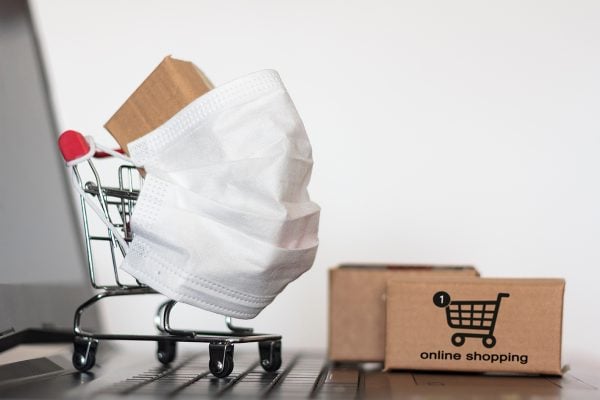The government has published their COVID-19 Secure Guidelines for employers with a set of 8 guides covering a range of different types of work. Many businesses operate more than one type of workplace for instance marketplace sellers may have a warehouse, office and vehicles, so you may need to use more than one of these guides as you think through what you need to do to keep people safe.
The full set of 8 COVID-19 Secure Guidelines are available to download here, but for the rest of this article we will focus on warehouses. You can download the full COVID-19 Secure Guidelines for Factories, Plants and Warehouses here.
As an employer, you have a legal responsibility to protect workers and others from risk to their health and safety. This means you need to think about the risks they face and do everything reasonably practicable to minimise them, recognising you cannot completely eliminate the risk of COVID-19. You must make sure that the risk assessment for your business addresses the risks of COVID-19, using the COVID-19 Secure Guidelines for Factories, Plants and Warehouses to inform your decisions and control measures.
Key steps in COVID-19 Secure Guidelines for Factories, Plants and Warehouses
Employers have a duty to reduce workplace risk to the lowest reasonably practicable level by takingpreventative measures. Employers must work with any other employers or contractors sharing the workplace so that everybody’s health and safety is protected. In the context of COVID-19 this means working through these steps in order:
- In every workplace, increasing the frequency of hand washing and surface cleaning.
- Businesses and workplaces should make every reasonable effort to enable working from home as a first option. Where working from home is not possible, workplaces should make every reasonable effort to comply with the social distancing guidelines set out by the government (keeping people 2m apart wherever possible).
- Where the social distancing guidelines cannot be followed in full, in relation to a particular activity,businesses should consider whether that activity needs to continue for the business to operate, and if so, take all the mitigating actions possible to reduce the risk of transmission between their staff.
- Further mitigating actions include:
- Increasing the frequency of hand washing and surface cleaning.
- Keeping the activity time involved as short as possible.
- Using screens or barriers to separate people from each other.
- Using back-to-back or side-to-side working (rather than face-to-face) whenever possible.
- Reducing the number of people each person has contact with by using ‘fixed teams or partnering’ (so each person works with only a few others).
- Finally, if people must work face-to-face for a sustained period with more than a small group of fixed partners, then you will need to assess whether the activity can safely go ahead. No one is obliged to work in an unsafe work environment.
- In your assessment you should have particular regard to whether the people doing the work are especially vulnerable to COVID-19.
Do you need PPE?
Where you are already using PPE in your work activity to protect against non-COVID-19 risks, you should continue to do so. However, when managing the risk of COVID-19, additional PPE beyond what you usually wear is not beneficial according to the latest government advice. This is because COVID-19 is a different type of risk to the risks you normally face in a workplace, and needs to be managed through social distancing, hygiene and fixed teams or partnering, not through the use of PPE.
Communicating with your employees
Everyone operating a warehouse should take the time to read the COVID-19 Secure Guidelines for Factories, Plants and Warehouses availabl here as well as any other Guidelines such as for your office, vehicles or other parts of your business available here.
Perhaps most importantly of all, you should discuss your COVID-19 plans with your employees, ensure they understand what you are doing to minimise the risk to them and what they need to do to minimise the risk to their co-workers. And then sign and display a notice in your workplace to show you have followed this guidance and if possible publish the same on your website.









